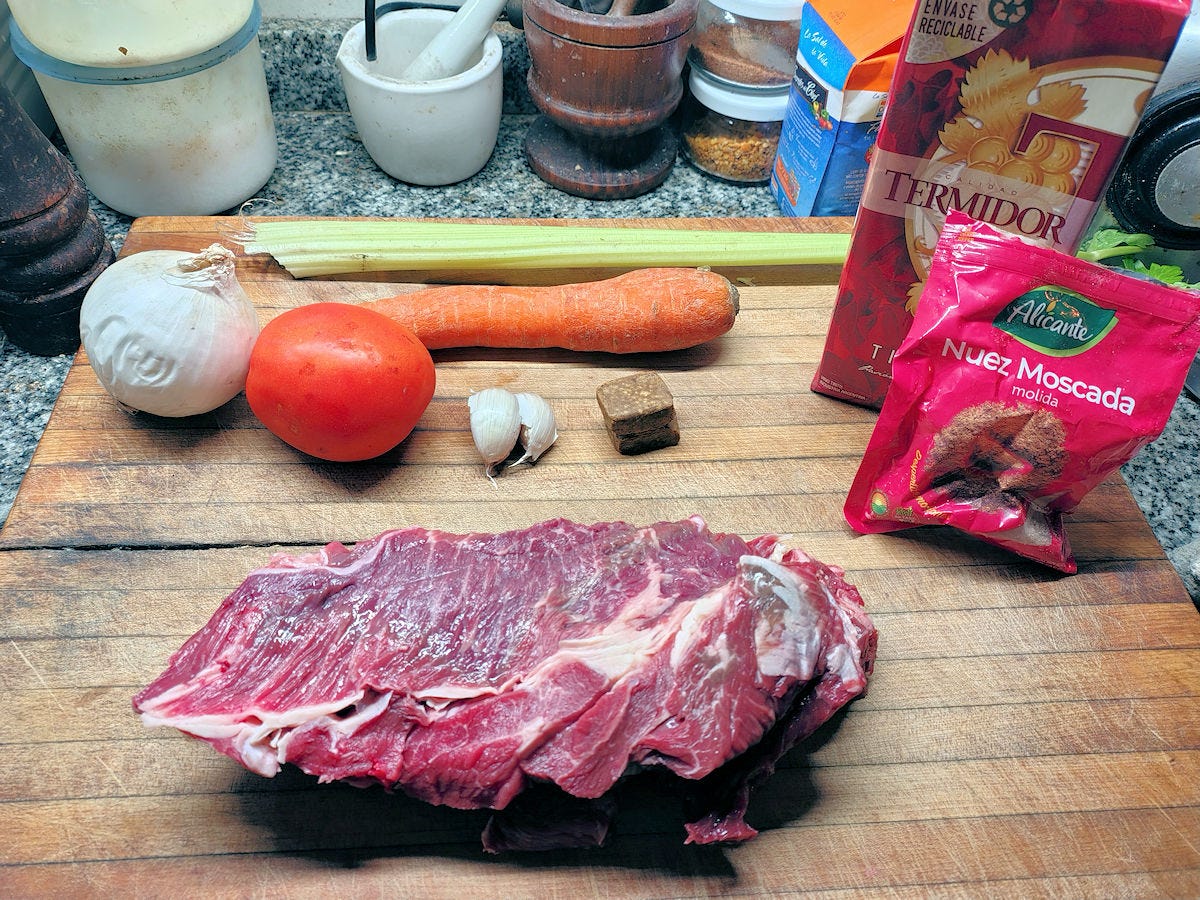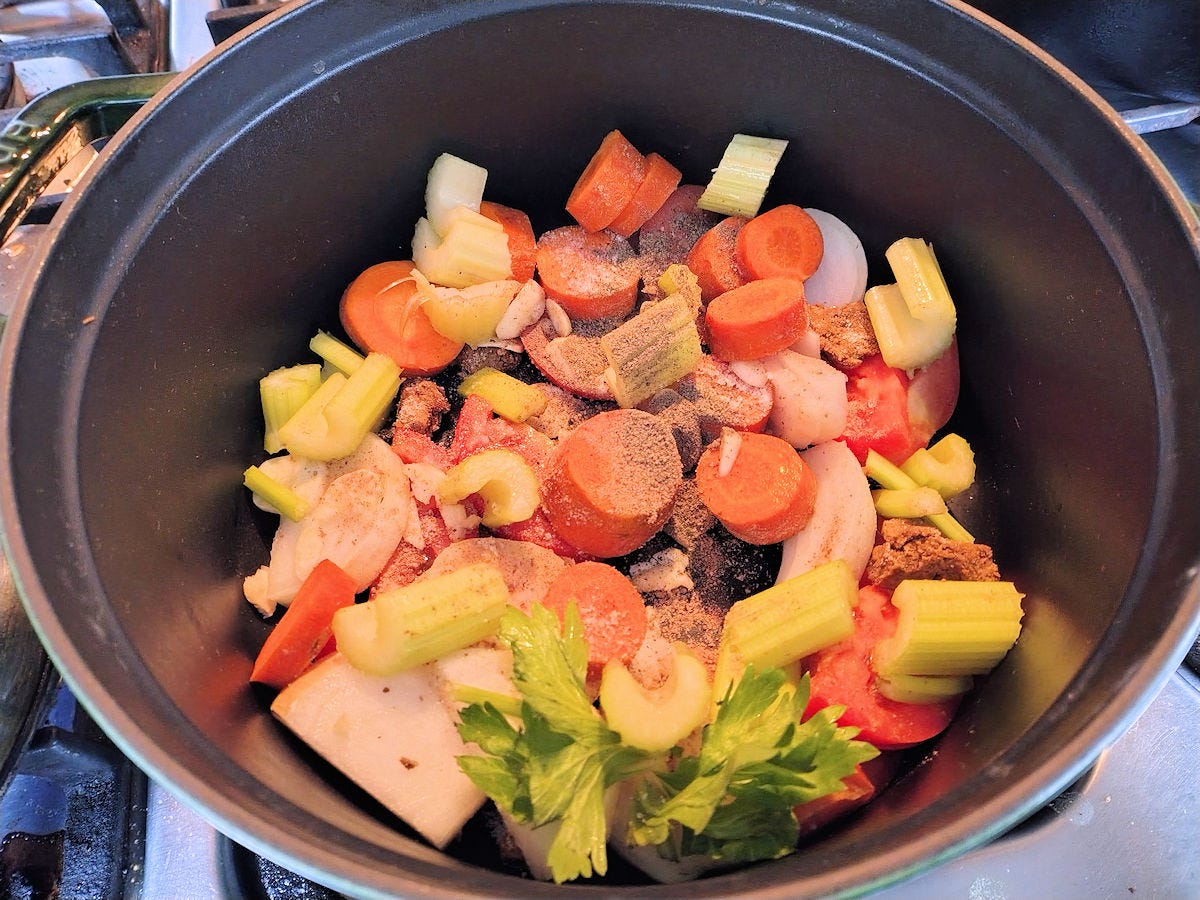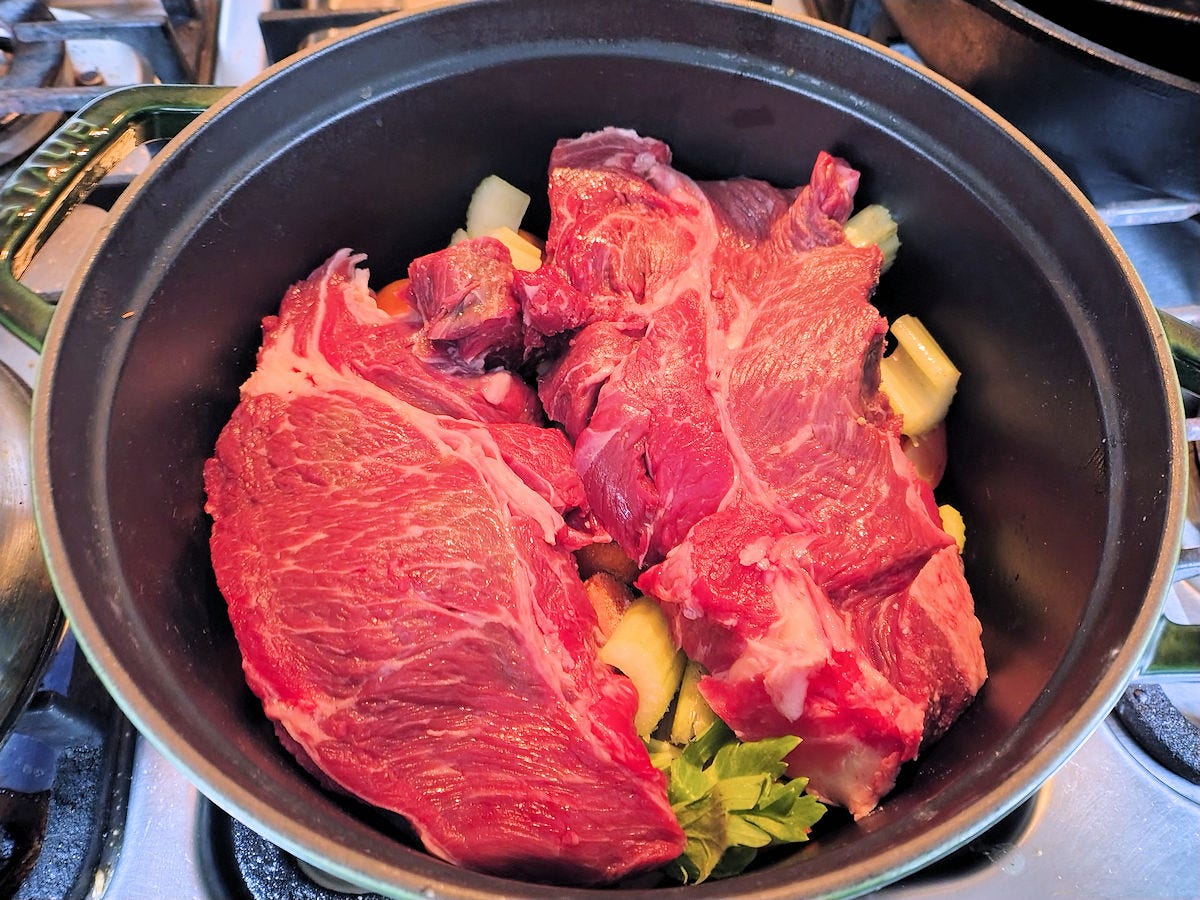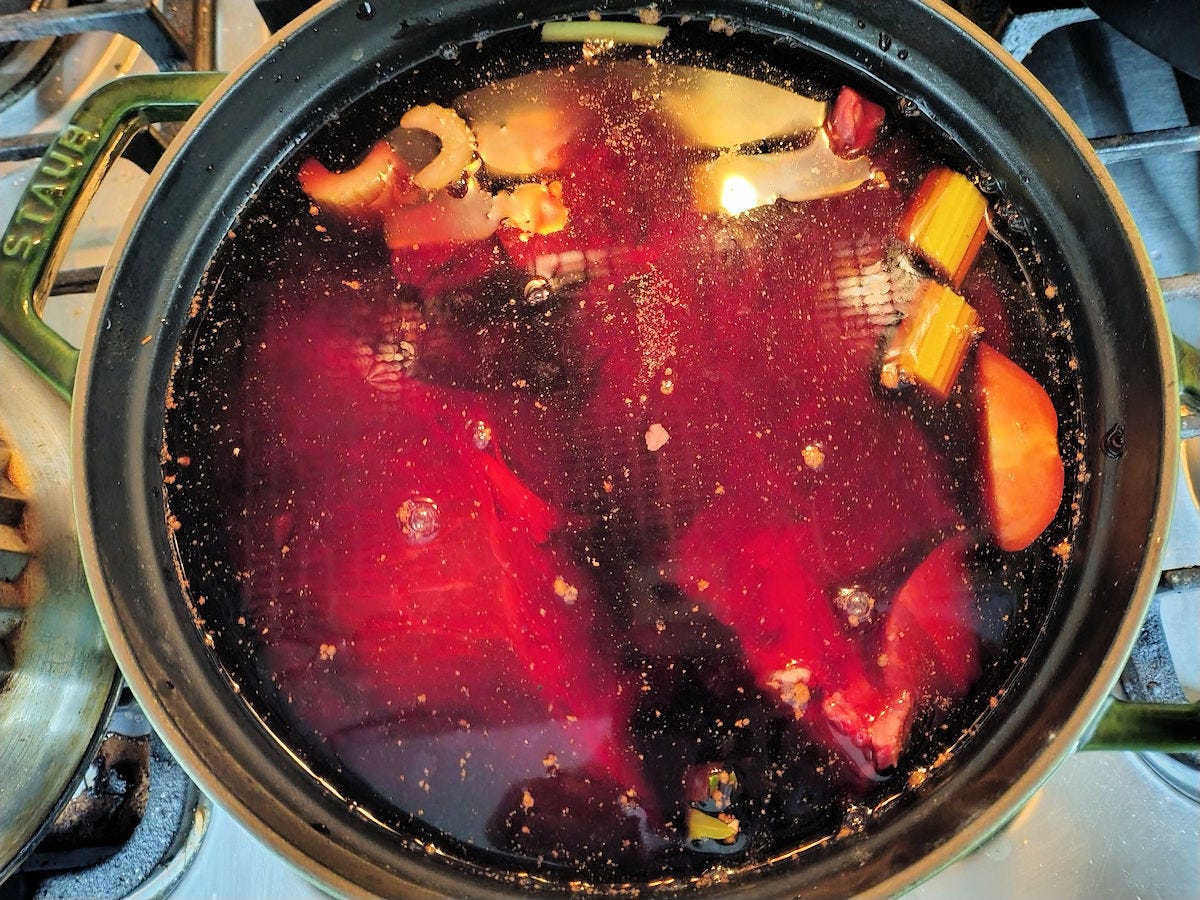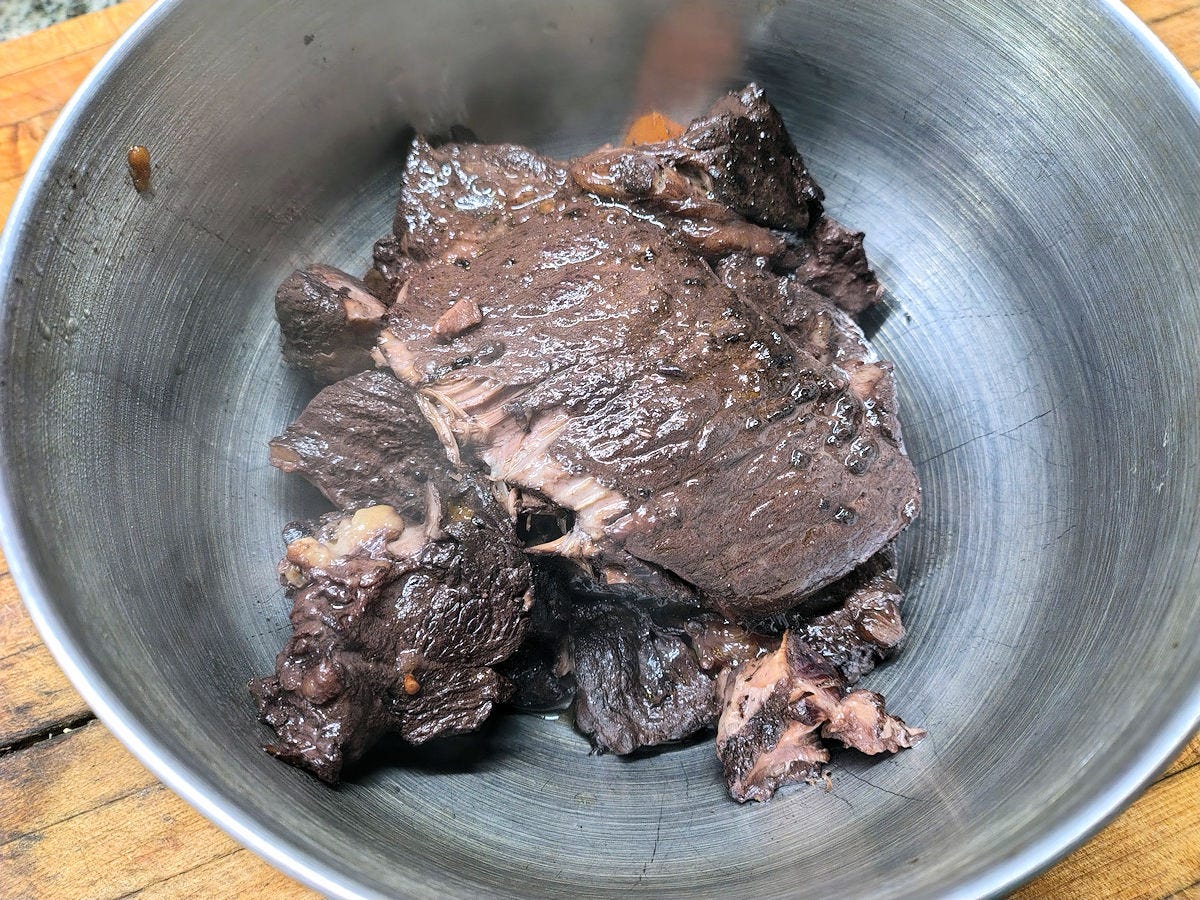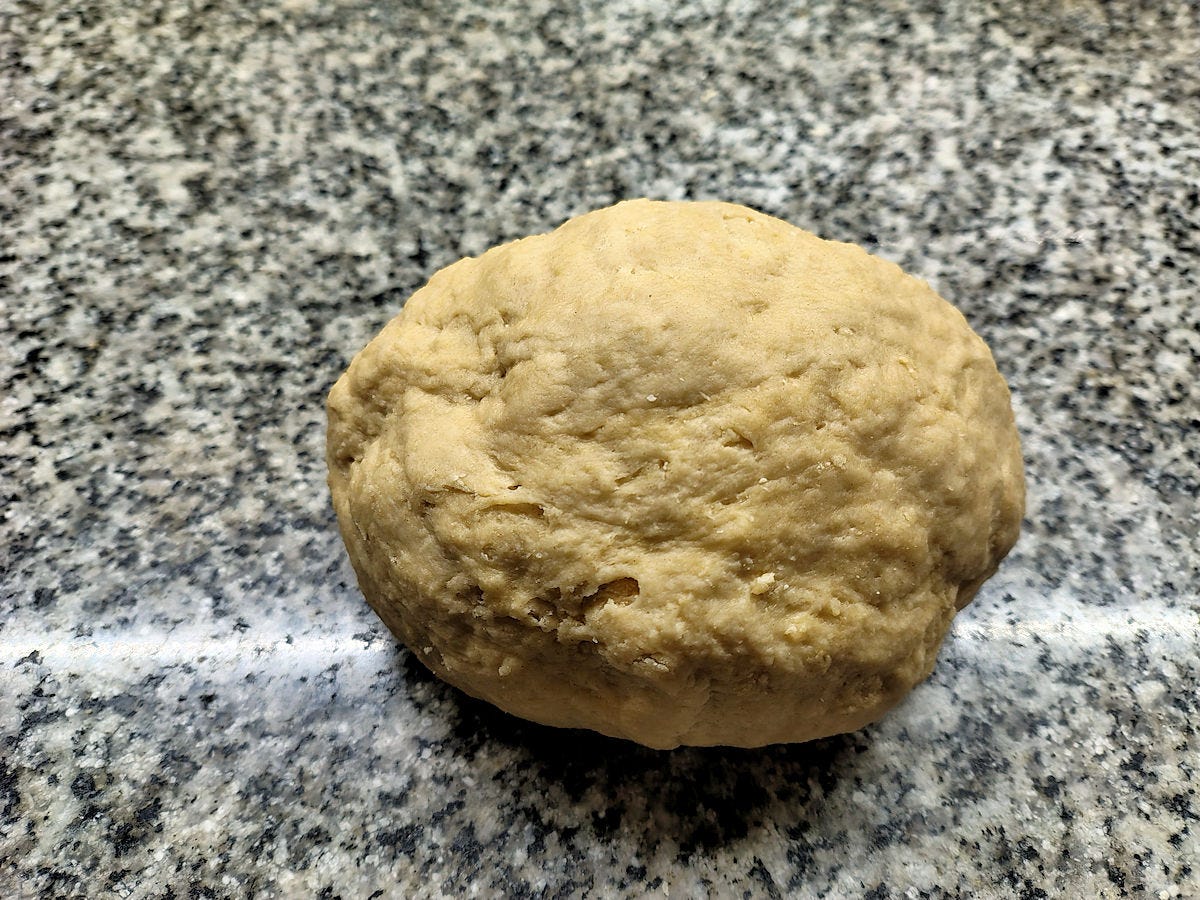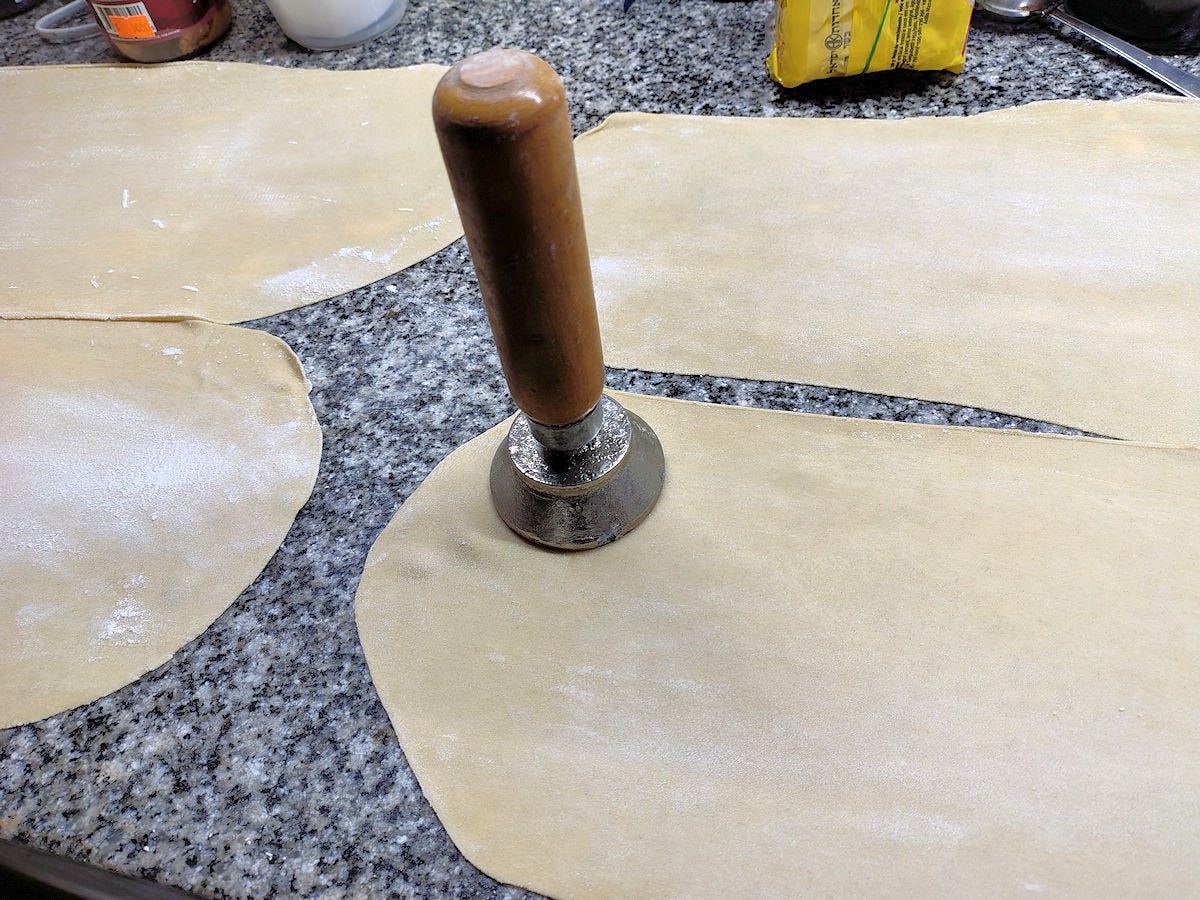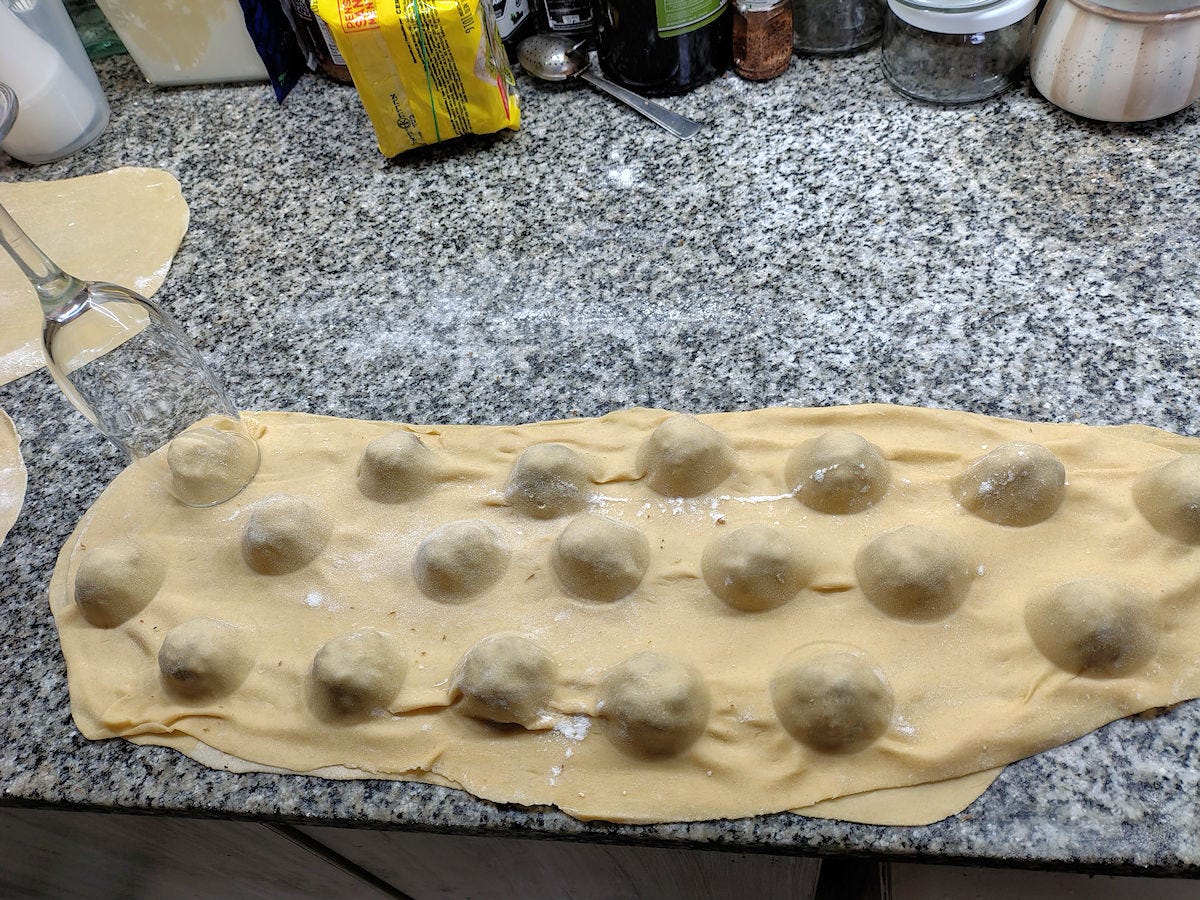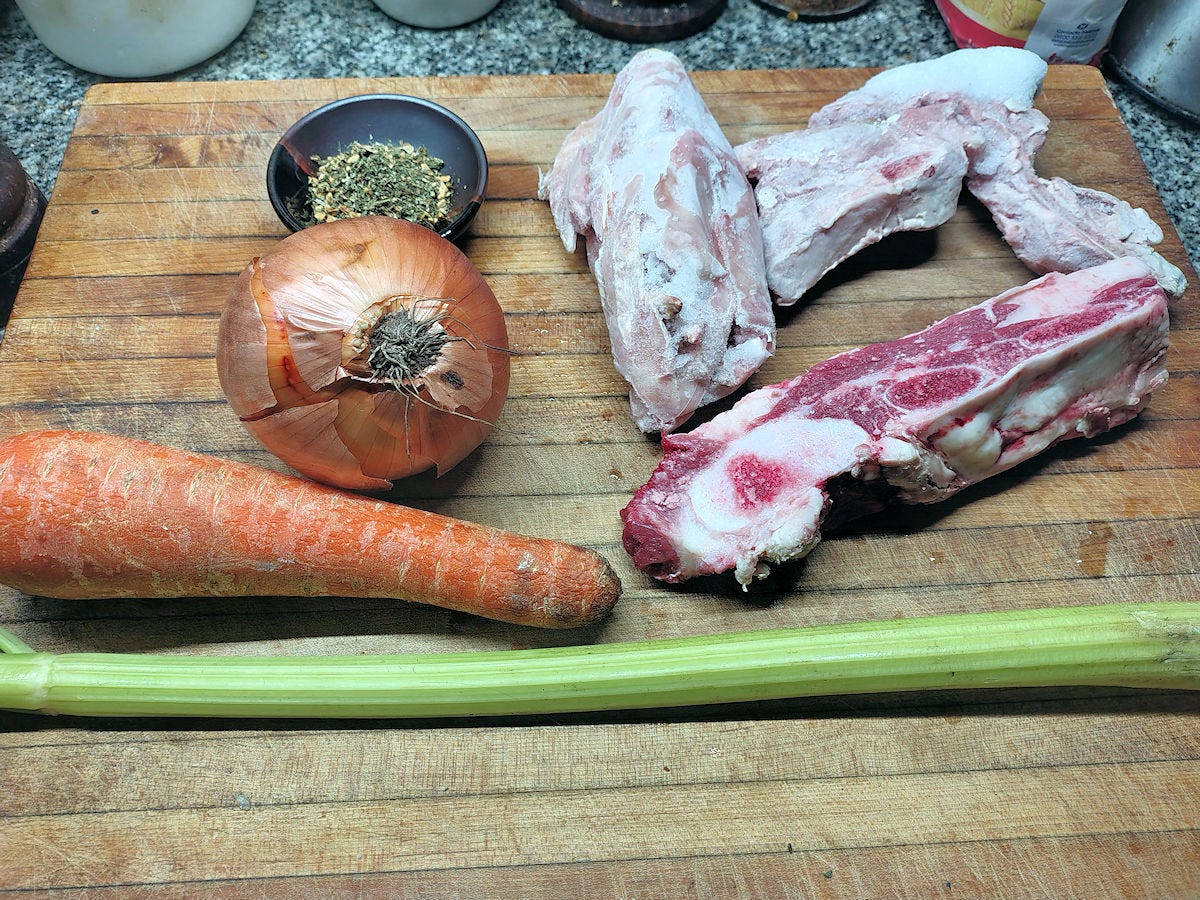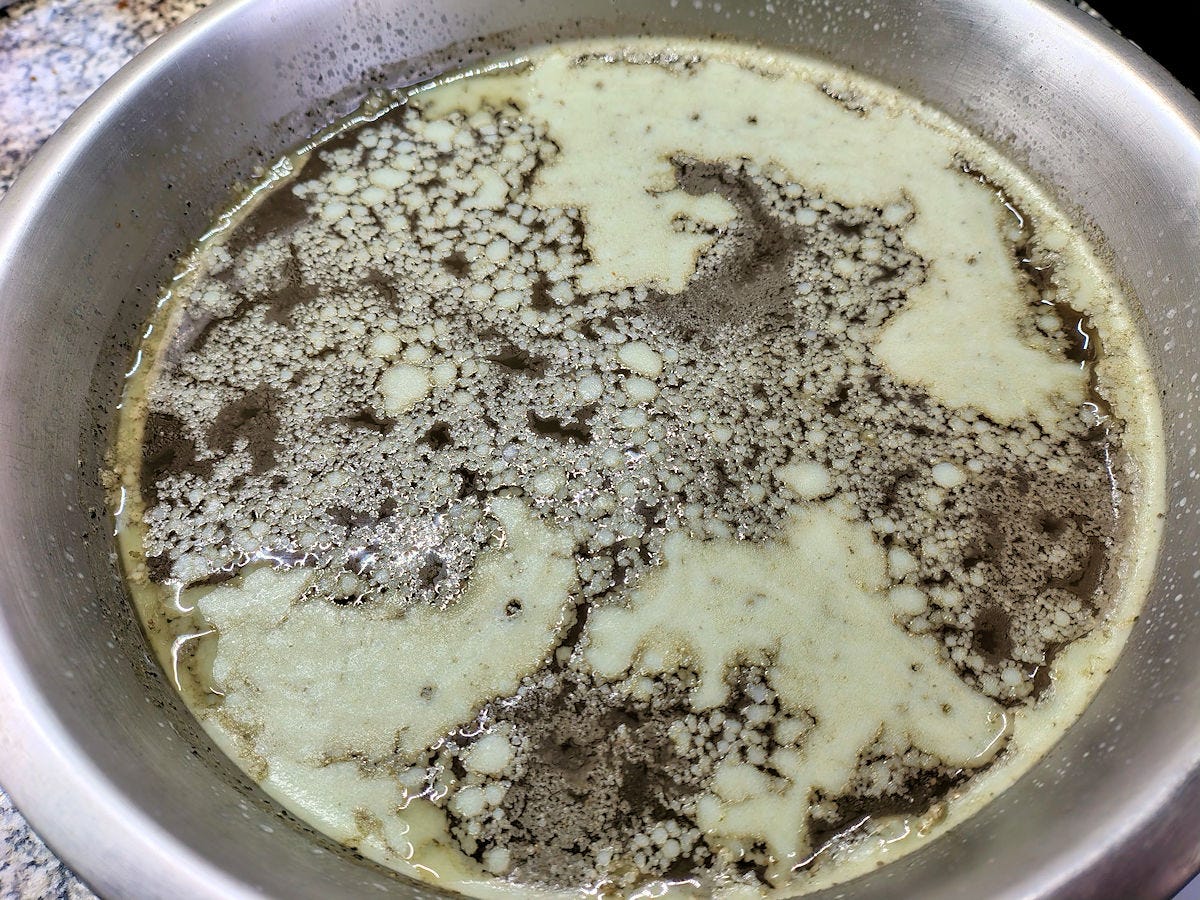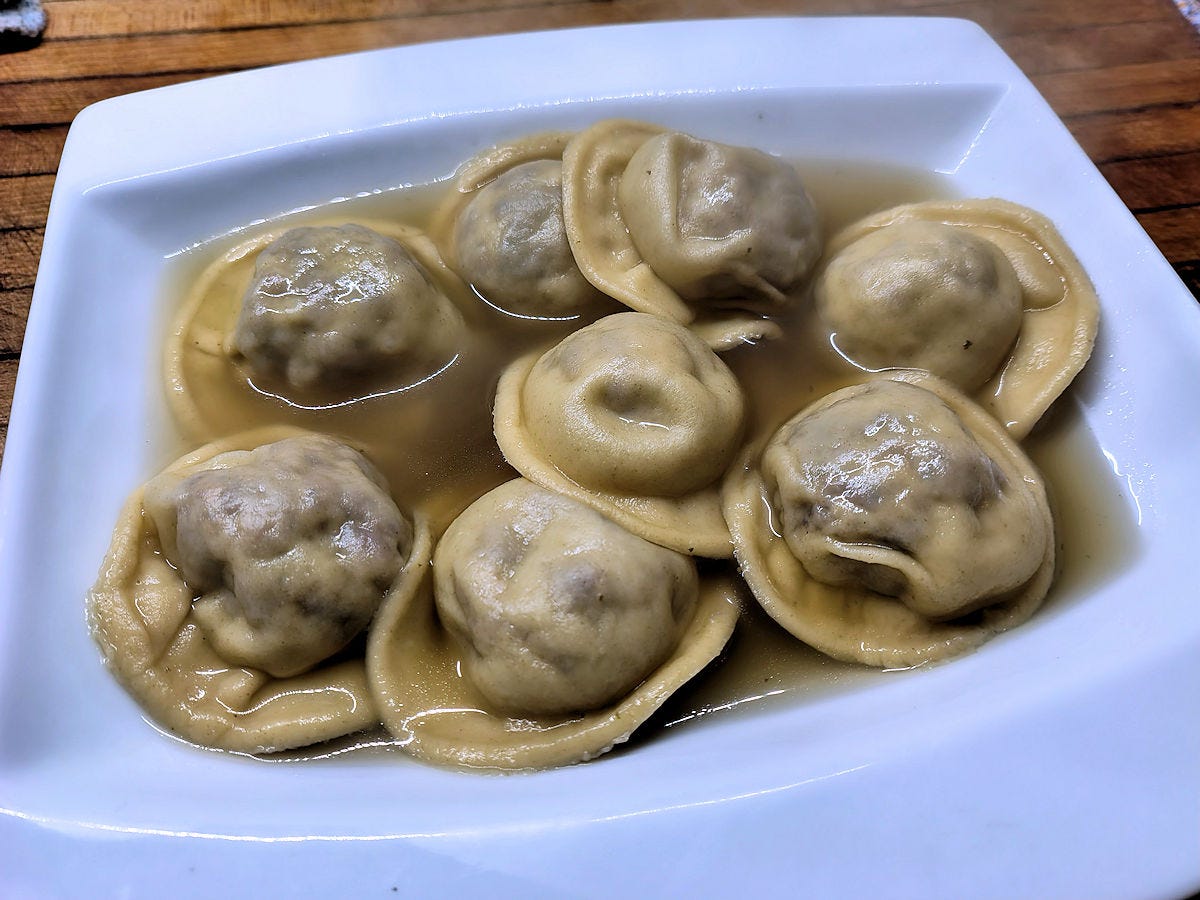"Little Rounded Stuffed Pasta"
I which I noodle around with this classic dish from Emilia-Romagna.
Anolini. Likely, you’ve never heard of them. Mostly because outside of the region they’re from, Emilia-Romagna, in north-central Italy, most people probably just call them something like ravioli. And even the “official” definition, as suggested by the title of this post, can be misleading because there’s a whole section of the province around Piacenza where they are made by folding a disc in half and forming a half-round. And in other pockets of the region they may be called caplett, anvein, or marubei, dependent on local dialects.
But the most traditional dish of these is to make round, sort of pot-bellied pasta stuffed with a stewed meat called stracotto, mixed with parmigiano reggiano, breadcrumbs, and egg. The pasta is then served up in a bowl of broth called caldo in terza, the three-way broth, i.e., a soup base made from pork, beef, and chicken bones.
This is going to be a somewhat long post to cover the filling and the broth. The final dish is simple as can be in preparation. If you’re going to attempt this, plan in advance - the filling takes a minimum of a day to do it right, and some would argue two days.
For the stracotto we have some stewing beef, onion, tomato, carrot, celery, garlic, beef stock cubes (because, well, for this, they work), cheap red wine, nutmeg, salt, and pepper.
A note on cooking wine, since I specified “cheap” red wine. There’s an old adage of “never cook with a wine you wouldn’t drink”. And I’d agree with that on two fronts - I’d never use a “cooking wine”, which usually contains salt and various preservatives to make it shelf-stable; and second, if I’m making a wine sauce, I want the wine to be of a decent quality, because you’re actually going to be eating it. But in this case, we’re setting up to braise our beef for a minimum of 24 hours. I promise you, cheap wine will be just fine.
Chop up the vegetables and put them in the pot with the seasonings and stock cubes.
Put the meat into the pot atop them.
Top with the red wine and enough water to cover them by a couple of centimeters, or an inch. Cover the pot, turn the heat on at the lowest setting possible, and cook… for a minimum of 24 hours, some say 36. Check it now and again - you’ll find it’s likely it won’t even boil, it will just be at a bare simmer, if that. If your lid is loose fitting (I’m using a heavy pot with a lid that basically seals), you’ll get some evaporation. The tradition is to keep adding a bit more red wine as needed.
After roughly 24 hours, this is what I had.
Remove the meat to a bowl and let cool.
Shred the meat with a couple of forks, it should basically just fall apart at this point. Mix it with breadcrumbs and grated parmigiano - half the amount of each in comparison to the amount of meat. So here I had roughly two cups of meat, I added a cup of breadcrumbs and a cup of grated cheese. For each, roughly, cup of meat, add one egg. The a little salt (not too much, the cheese is already salty), and a bit of nutmeg.
Use your hands, get in there, and mash it all together really well until you’ve got a sort of thick paste consistency.
This is traditionally a pasta made with plain pasta flour, not semolina, and egg. for roughly each 150 gm, or cup, of flour, add one large egg. I only had smaller eggs, so after I started mixing this (with 300 gm of flour), I ended up adding a third egg.
You want a soft, but not sticky dough in the end. Set it aside to rest for half an hour.
Roll it out in thin sheets. Then, I use the pasta cutter that I’m going to use in the end to just lightly mark half the sheets with circles that are close together.
On to each circle, put a ball of the filling, about a tablespoon. Use your judgment.
Brush the other sheet lightly with water to make sure it sticks well, flip it over and press it down around each ball of filling. I do it sort of loosely, just enough to get the major air pockets out, and then I use an inverted champagne flute to lightly press down around it - just happens to be the perfect size, which presses the remaining air out from around the filling and seals it.
Then I use the cutter to cut out the individual anolini. Some cooks assert that there shouldn’t be a rim around it, which would require a cutter the size of the champagne flute, and cut it as close to the filling as possible. Others say, make it with a rim. I use what I have. You can re-roll out the scraps if you like and make more!
I could see part-way through that I was going to have leftover filling. I could have made more pasta and then more anolini…
…instead I made meatballs, a bit bigger, and stuck them in the freezer to use another day.
On to our broth. Now, I have a tendency to just throw leftover bones into the freezer in bags for use in making stocks and broths. So here I have some frozen pork chop bones and frozen chicken wing tips. I didn’t have any beef bones in the freezer, so just grabbed something inexpensive with bones at the butcher shop. Add to that the classic onion, carrot, celery, plus some dried parsley (mine was dried “provençal” so it had some granulated garlic in it… extra flavor!). By the way, I’m not going to call foul on you if you decide it’d just be easier to make a pot of broth by dropping in chicken, beef, and pork stock cubes. Or even just one of those. It will work.
Lightly brown the bones in a pan, add the vegetables, lightly brown them as well, then top with water, bring to a simmer, and cook for about three hours to get a nice rich broth. Let it cool, stick it in the refrigerator overnight, and then…
…remove the congealed fat.
When you’re ready… put the broth (you can clarify it if you want - I probably would if I was serving it in the restaurant), add salt to taste once it’s hot.
Then, cook the anolini in the boiling broth.
And, serve. You could decorate with a little chopped parsley if you like.
This is one of those long drawn out recipes that pop up in various cultures that there’s not much to do but be patient while things essentially do their own thing. The results are oh so worth it. These are amazing. We ended up eating the entire batch in one day.
And… just so you know I didn’t forget them…
The next day I made a simple tomato sauce with onions, garlic, and lots of pepper. I thawed and browned the meatballs, then finished cooking them in the sauce. And served it all ladled over spaghettini. Now, this filling doesn’t make the best meatballs. The flavor is there, but the texture isn’t right for meatballs. It was delicious, but we ended up sort of smashing the meatballs into the pasta and sauce, breaking it all up. It just worked better - I probably shouldn’t have bothered making meatballs, but just browned the mixture and then made the tomato sauce around it.


